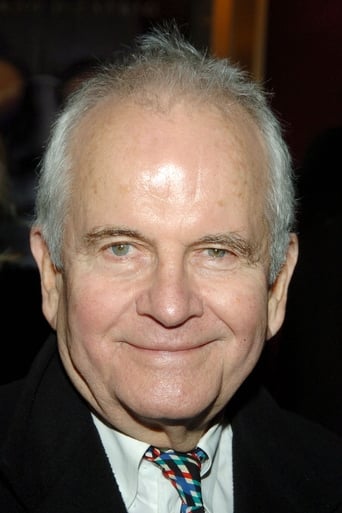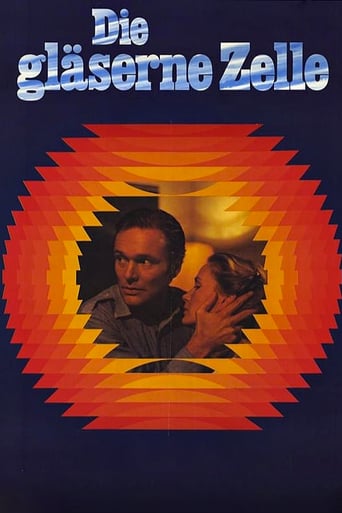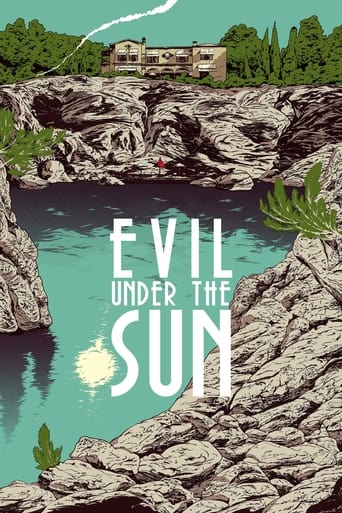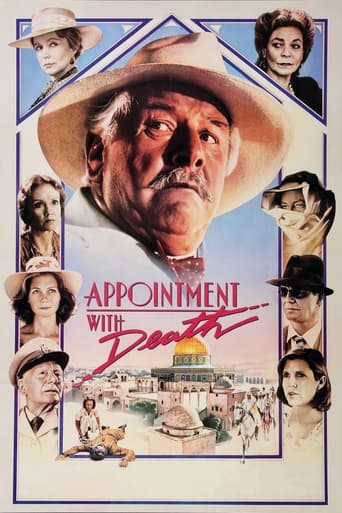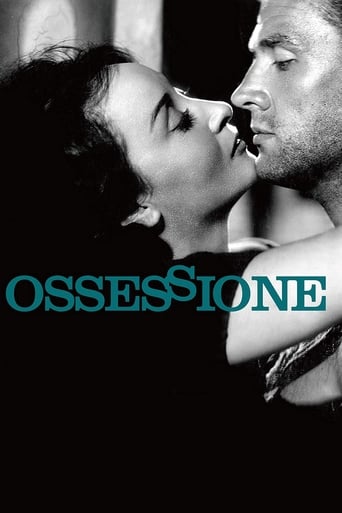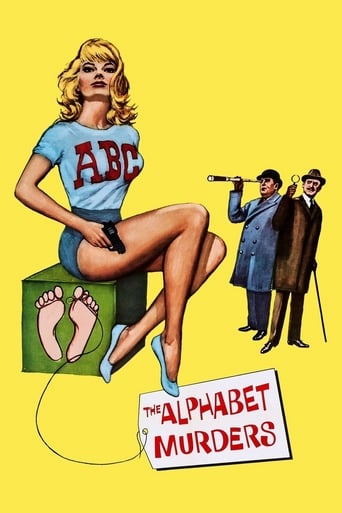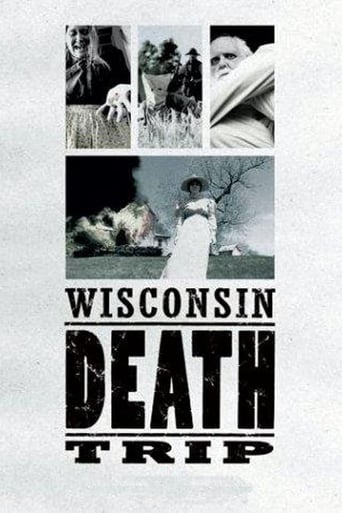

Wisconsin Death Trip (1999)
Inspired by the book of the same name, film-maker James Marsh relays a tale of tragedy, murder and mayhem that erupted behind the respectable facade Black River Falls, Wisconsin in the 19th century.
Watch Trailer
Cast
Similar titles
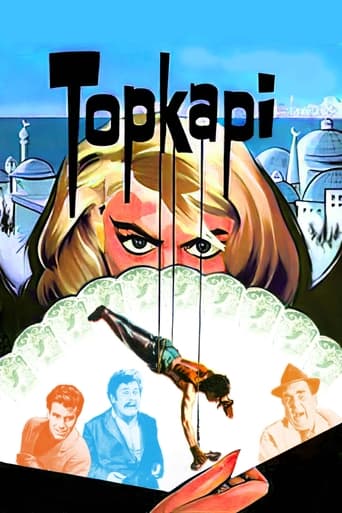
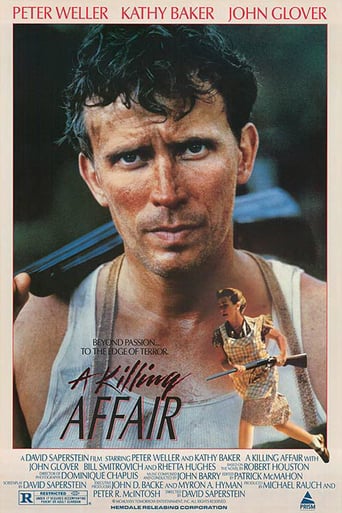

Reviews
Better Late Then Never
It's a mild crowd pleaser for people who are exhausted by blockbusters.
A terrific literary drama and character piece that shows how the process of creating art can be seen differently by those doing it and those looking at it from the outside.
An old-fashioned movie made with new-fashioned finesse.
Directed by James Marsh, 'Wisconsin Death Trip' chronicles a period of Wisconsin history in which there were an inordinate amount of murders, commitments to the mental asylum and general 'colorful' doings. While there are some photographs from the time period used, the lion's share of this film utilizes footage akin to dramatic recreations. The first time I saw the film 'Wisconsin Death Trip', I believe that I was more taken with the fact that it was something unusual, and not a 'regular' documentary, and I let the gross lack of substance be overridden by the obscure subject matter. After seeing it now for the second time almost two years later, I still feel that the subject matter is compelling, but I remembered more clearly that I left the film the first time with a sense of emptiness and more questions than I normally feel comfortable with after sitting through 76 minutes of film. There are many shortcomings and manipulation of facts in this film. The narration (by Ian Holm) tells us that the focus is on Black River Falls, a very small town in northern Wisconsin. Yet, many of the goings-on didn't take place remotely near Black River Falls. There are stories of murder and mayhem in Kenosha, for example Kenosha being a good three and half hours (minimum) by the interstate from Black River Falls. Also confusing is both the claim that the events described took place over a nine year period, yet the presentation leads us to believe that they actually took place in the course of a year. Not entirely important, unless one is trying to establish the magnitude of these events; obviously the impact is much larger when presented in one-ninth the time they actually took place. And in regard to the events in question, they, coupled with some very striking and creepy photographs, provide some very intriguing and creepy insight. Unfortunately, the filmmaker did not provide us with any kind of outlet as to why these events were occurring when they hadn't before, nor does he give us a lot of background for the audience to hypothesize for him. While the subject matter is very interesting, 'Wisconsin Death Trip' falls far short of what it could have been. There is a book of the same title by Michael Lesy which perhaps explores some of the issues which don't get explained in the film, but unfortunately, when a film is presented as a documentary, the onus should not be on the audience to do the research that should have been included in the first place. This is a real niche film that is probably going to appeal most to Wisconsin historians, but as someone who both lives in the state and is extremely interested in both Wisconsin history and lore, I was not remotely impressed. 4/10Shelly
'Nowhere in this great continent of ours can be found a more desirable residence.' This is a pitch for the small town of Black River Falls, Wisconsin. If by any chance you've already accepted this seemingly ordinarily little exaggeration as the truth, then its time you saw a melancholic little documentary called Wisconsin Death Trip.This is a film which details the events that occurred in Black River Falls during the 1890s and is the director James Marsh's take on the 1970s literary cult classic of the same name, written by Michael Lesy. It seems that the whole town was besieged by fits of suicide, murder, lunacy and several inexplicable and bizarre events that could have been plucked cleanly from an Edward Gory poem. The grim and dark character of this strange little town and its inhabitants are communicated through photographs taken at the time and newspaper reports. The photos are connected to starkly beautiful black and white recreations of the odd goings-on of Black River Falls. Ian Holm narrates the film in a haunting and sometimes blackly comic manner, and a few records from the local insane asylum are whispered disturbingly, telling us about the many inhabitants who were committed there. The recreations are shot with dazzling fluidity, all are stunning to watch and every single one shocks or horrifies to an enthralling degree.Like Aronofsky's Requiem for a Dream, this twisted tale takes place over several seasons and the other-worldly events just keep on happening; from a farmer who blew his own head off with dynamite to a 63 year old-14 year old paedophilliac marriage, they seem never-ending as the depressing Wisconsin Winter looms over the horizon. There are certain characters who keep reappearing throughout the film such as the 13 year old who shot an old man for fun and then participated in a western style chase and gun fight with a posse, and the has-been opera singer, Pauline L'Allemand, who moved to Black River Falls and slowly went mad, hearing voices from the spirit world and ended up in the Mendota Asylum for the Insane.It is the morbid fascination that resides in some of us which makes us want to watch this to the end, to see just how tantalizingly strange the events in this town can get. The macabre style is pulled off with perfection; it is often grisly and melancholic to watch and yet I was fascinated by it and soaked up every moment. Wisconsin Death Trip fails, however in trying to convince us that Black River Falls hasn't changed since the 1890s. Its attempts (in colour, rather than black and white like the rest of the film), are rather forced and unsatisfying. But the blank, placid faces of the old people of the modern day town are certainly reminiscent of the photos taken back at the end of the 19th century. Perhaps the sheer number of the events at the time makes the film a little unbelievable, but it is the photos which remind us that these events actually took place and aid in bringing home the Gothic and demented atmosphere of the whole tragic tale.The truth is: I was horrified and engrossed in the story of this freakish town and the maniacs who resided there. Then, after thinking about it, I realized that the crimes of passion, suicides and gun violence of our so-called 'modern society' were happening over a century ago. I believe that this is one of the most significant points James Marsh was trying to put across.However, there are still some out and out undeniably weird happenings that took place in Black River Falls which would leave us utterly aghast if we saw them in the present day. When viewing, be sure to look out for the Polish girl who set fire to numerous buildings because she was 'lonely and homesick and needed some excitement.' and especially Mary Sweeney, with her window smashing antics.
While I was excited at the prospect of a turn of the century documentary about Wisconsin history this disappoints. With all the skill of a boorish film school dropout, this film goes for 'shocking' gusto showing what is an entirely misleading portrait of a small town and state. First things first, the movie is not about exclusively Black River Falls as the film implies with its opening montage. The film purports to be about a sleepy Wisconsin town with little industry or population but ends up being more of a mix of Wisconsin crime history spanning ten years. This effort I'm sure looked wonderful on paper but James Marsh quite obviously does not have the talent to bring this idea to life. While I've no other experience with James Marsh's work, I got the feeling that this film was made for or by the cynical bohemian sitting in a film house sniggering at the 'pathetic' lives of average, normal Midwestern folk. Perched in their lofty lives, looking down on the simple folk blissfully toiling, unaware of the horror they exist in. The film's sense of humor is as joyless and tedious as anything in my recent memory.Personally speaking, the only humorous attributes of WISCONSIN DEATH TRIP were the tired methods used setting mood. Using songs not remotely of the era, grating cinematic technique, repetitive scenes, the cliché' whispering doctor and the disembodied 'scary' voice telling you of all the 'horrors' of the age. None of the items presented were particularly shocking, nor were they to be unexpected. Ten years ANYWHERE in the world will yield the same results regarding crime. A poor man shot his creditor? Wow, you don't say. A man shot his wife after he catches her cheating? No way! A farmer that lives alone hears voices? Nay I tell you nay! Crazy Norwegian customs!? Stop the press. Padded beyond belief this film presents what could have been discussed in 10-20 minutes into a grueling 76 minutes of schlock tripe. What you're left with is an extremely worthless wooden nickel attempting to make the ordinary seem extraordinary and the only thing amazing about this film is how badly it fails. Avoid this documentary.
Beautiful shot, emotionally distant and utterly incoherent. What interested me in the film to begin with, the story of this small town and all of the bizarre misfortune it faced, turned out to not be true at all. But the film never freely admits this. The film moves between the B&W past and a living-color present. The present documents the town of Black River Falls exclusively, a small town in northern Wisconsin. So, when we flash back to the past, we are led to believe that all of the morbid events: murder, madness and mayhem, that we're hearing about occurred in or around Black River Falls. Perhaps some of it did occur in the immediate region, but more precisely, we're getting accounts of the morbid events from the Black River Falls NEWSPAPER. So we're talking about events all over the state, not in one small town! A girl drowned herself in the lake in Kenosha? Kenosha is near the Illinois border. Not to mention that other towns in the film: Appleton, Rhinelander, Eau Claire, LaCrosse, Beaver Dam, and Madison represent points at every corner of the state. Most people wouldn't realize this, but when you do, you know the rest of the film is based on a flimsy misrepresentation and it completely loses its coherence and what makes its initial premise compelling. If the timeframe were 10 years later, they might well have represented McKinley's assassination as taking place in Black River Falls, since the paper surely had a story about it. I didn't hate the film, it has some great imagery and some of the stories are interesting enough, but I felt cheated more than anything, because in the end, there's no real through-line and as such, not only no resolution but nothing to resolve.
